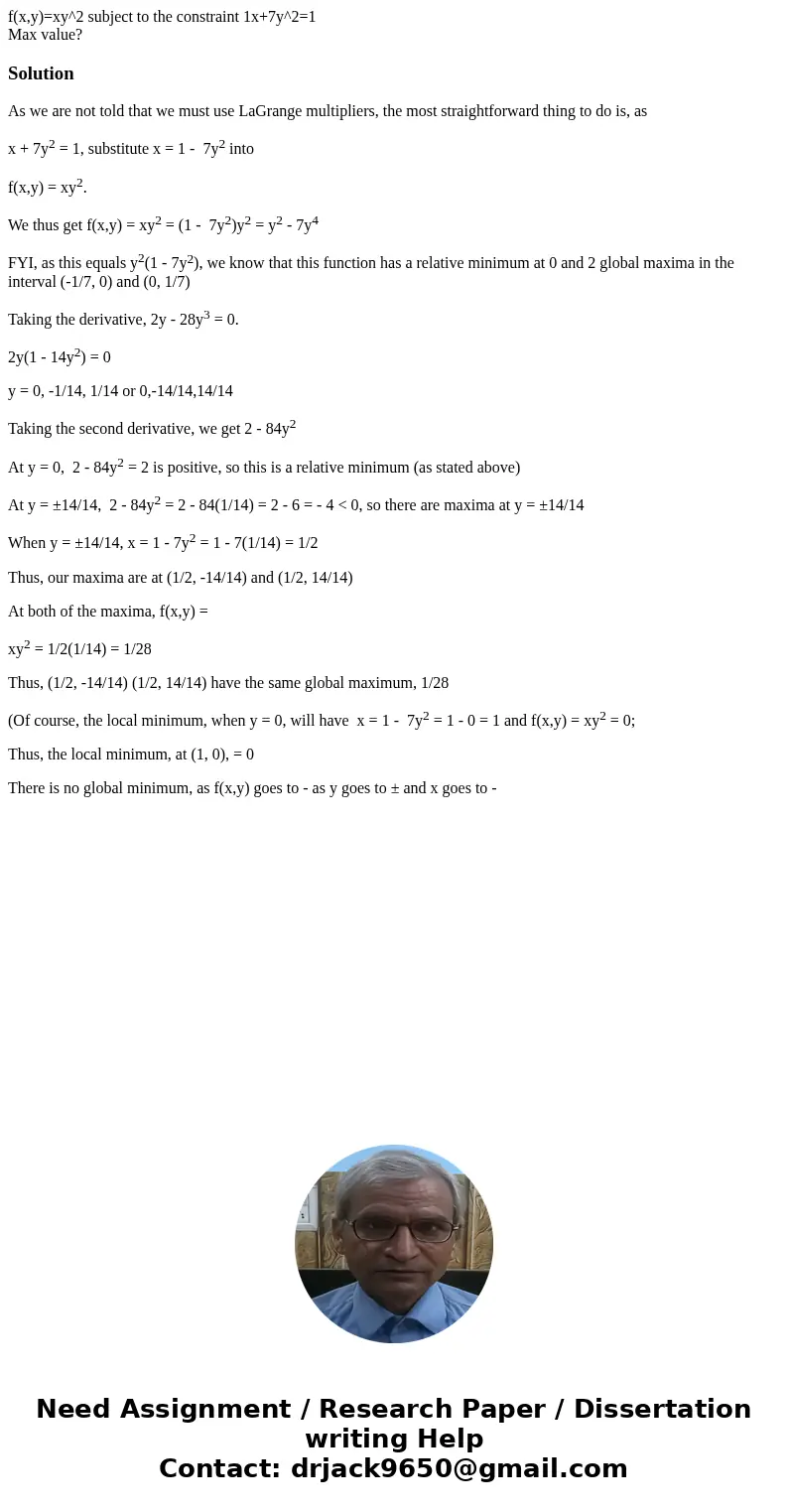fxyxy2 subject to the constraint 1x7y21 Max valueSolutionAs
Max value?
Solution
As we are not told that we must use LaGrange multipliers, the most straightforward thing to do is, as
x + 7y2 = 1, substitute x = 1 - 7y2 into
f(x,y) = xy2.
We thus get f(x,y) = xy2 = (1 - 7y2)y2 = y2 - 7y4
FYI, as this equals y2(1 - 7y2), we know that this function has a relative minimum at 0 and 2 global maxima in the interval (-1/7, 0) and (0, 1/7)
Taking the derivative, 2y - 28y3 = 0.
2y(1 - 14y2) = 0
y = 0, -1/14, 1/14 or 0,-14/14,14/14
Taking the second derivative, we get 2 - 84y2
At y = 0, 2 - 84y2 = 2 is positive, so this is a relative minimum (as stated above)
At y = ±14/14, 2 - 84y2 = 2 - 84(1/14) = 2 - 6 = - 4 < 0, so there are maxima at y = ±14/14
When y = ±14/14, x = 1 - 7y2 = 1 - 7(1/14) = 1/2
Thus, our maxima are at (1/2, -14/14) and (1/2, 14/14)
At both of the maxima, f(x,y) =
xy2 = 1/2(1/14) = 1/28
Thus, (1/2, -14/14) (1/2, 14/14) have the same global maximum, 1/28
(Of course, the local minimum, when y = 0, will have x = 1 - 7y2 = 1 - 0 = 1 and f(x,y) = xy2 = 0;
Thus, the local minimum, at (1, 0), = 0
There is no global minimum, as f(x,y) goes to - as y goes to ± and x goes to -

 Homework Sourse
Homework Sourse